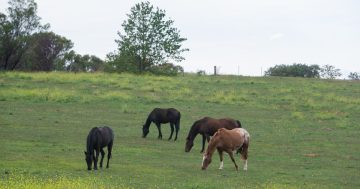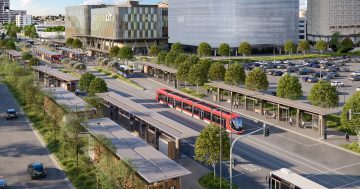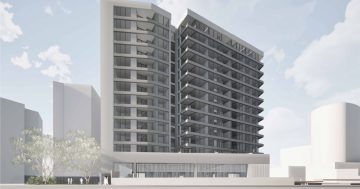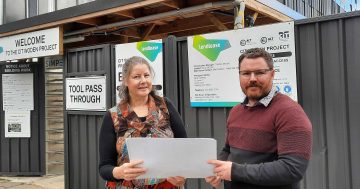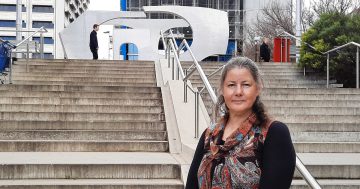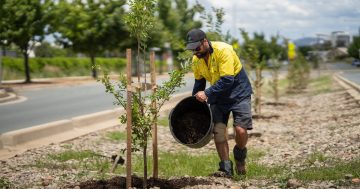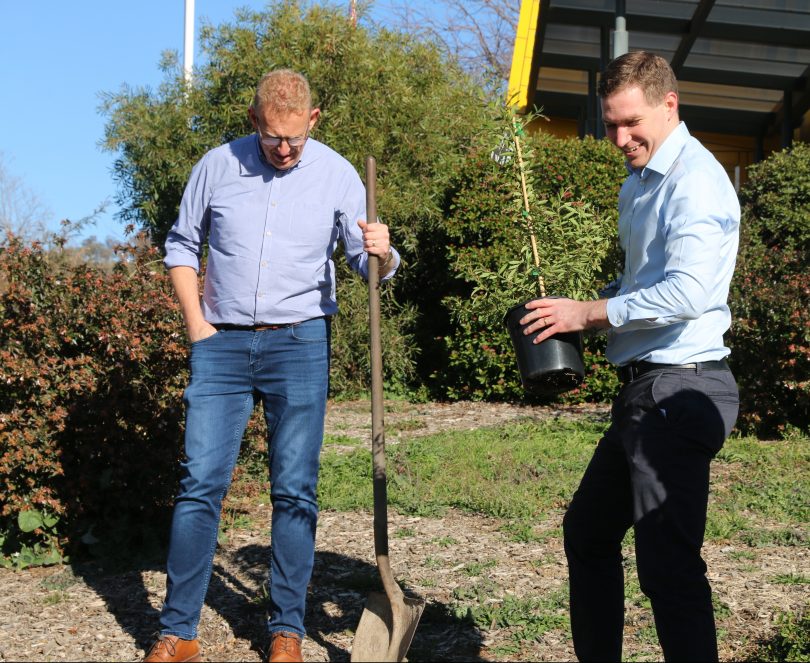
Canberra Liberals’ leader Alistair Coe, right, with colleague Mark Parton at the million trees announcement. Photo: Dominic Giannini.
It was a welcome relief to see the Canberra Liberals make a policy announcement instead of complaining about the Barr Government’s refusal to speed up the winding back of COVID-19 restrictions to keep pace with NSW.
It has been somewhat mystifying to see Opposition Leader Alistair Coe doggedly pressing the point for ever-diminishing returns. We would all like things to return to normal, including Chief Minister Andrew Barr, who bears the burden of responsibility, on advice from the Chief Health Officer, for deciding when social distancing can be relaxed further.
Mr Coe could be accused of being all care and no responsibility in this matter.
Which is why his pledge to plant a million trees over the next decade and guarantee a green space within 10 minutes of home was good to hear.
Finally, with less than five months to the election on October 17, we were getting a taste of policy after weeks of coronavirus politics.
Yes, it had all the hallmarks of a media stunt – the big headline, the tree planting photo op, minimal detail and the policy uncosted – but the Liberals instincts are right even if their execution is a little cheesy, and may seem to make them easy prey for an entrenched government that has all the advantages of incumbency.
While it may be a challenge to prosecute the case that there aren’t enough trees or parks in the bush capital, particularly when the government is in the middle of a very visible planting program, the urban forest has been allowed to deteriorate and whatever work is underway or planned is a case of playing catch-up, even if there is a target of 30 per cent canopy cover by 2045.
The government rolled out the stats to counter the Liberals green space claims but Mr Coe rightly identified Woden and Gungahlin town centres as areas where tower and pavement dominate.
And it is questionable just how much greenery will be available in the new Woden CIT campus where space will be at a premium.
Canberra’s jam-packed newer suburbs have not fared so well as the older ones for trees and parkland, and the government’s infill plans have many established open spaces in their sights.
Rightly or wrongly there is the perception that the government is prepared to sacrifice open space for development, and the numbers show clearly a preference for higher density housing.
And for those ending up in apartment blocks, whether that be in town centres or in high-density suburbs such as Wright, access to attractive and thoughtfully designed green space will be crucial.
Planning and development can be a devilish business and for many communities the government is no angel.
One only has to look to the machinations around West Basin and the North Curtin Horse Paddocks to see obvious fault lines.
The Liberals are right to tap community unease about where this all heading but it is not just about trees and parks.
It is about the spaces within blocks, around them and the verges. Blocks are being built out to the perimeters, leaving little room for shade trees or gardens, and developments are maximising yields at the expense of good design and green space.
Street trees are only one part of creating a healthy urban environment and if we are going to have multi-storey residential precincts they should also include courtyards, gardens, green walls and anything else that will soften the impact of concrete, steel and glass.
Communities across Canberra complain about ad hoc development, master plans being ignored and a lack of overarching planning to achieve integrated outcomes.
Here is fertile ground for the Liberals to plant some serious policy seeds and offer the viable alternative Canberra deserves.
Greens MLA Caroline Le Couteur has presented a bill to the Assembly with a shopping list of changes to the way development applications are conducted, after years of a parliamentary agreement with the Labor.
That could be seen as an admission of failure as much as anything, and an opportunity for the Liberals to say they can do better.
But they will need to do more than a photo op to convince voters that they will protect the bush capital or fix the planning system.
And it doesn’t matter which party is in power, it will still have to grapple with the ACT’s fundamental fiscal challenges and the needs of a property sector vital to its economy.
It may be hard ask to persuade voters that a party devoted to cutting red tape, being open for business and opening up new development frontiers for young Canberrans to buy stand-alone homes can also safeguard the environment.
But that is the task, and with its green space policy there is still time to grow the detail that the government was so keen to say was missing. The Liberals will have to do that across the board if they wish to be taken seriously come October.
A million trees sounds great but there is work to be done if they are to bear fruit.












